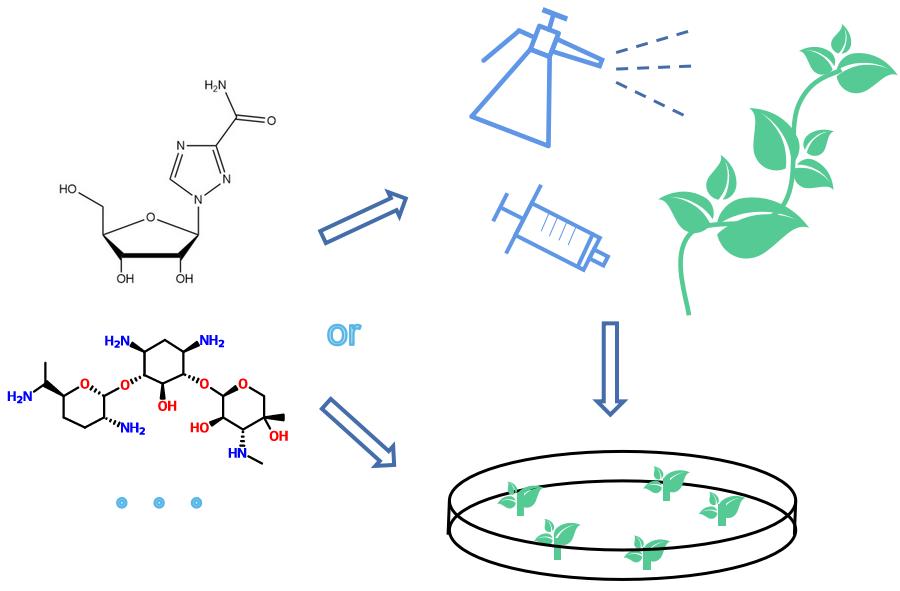Viral diseases have been an important constraint to the sustainability of plant production. The use of virus-free seedlings is one of the effective ways to prevent and control plant virus diseases. Detoxification technology is the core technology for producing virus-free seedlings.
In the tri-phosphate state, anti-viral agents can block the synthesis of viral RNA cap structure, thereby inhibit the proliferation and movement of virus and can keep the virus inactive temporarily. The rate of detoxification and survival will be improved by cutting the stem tips from young stems treated with anti-viral agents and then culturing them in tissue.
Commonly used antiviral chemicals include triazole nucleoside (virazole), diacetyl-dihydro-5-azidouracil (DA-DHT), 5-dihydrouracil (DHT), 8-a-azidoguanine, actinomycin D, 2-thiouracil, gentamicin, etc. The higher the concentration of antiviral agent used and the longer the treatment time, the more obvious the detoxification effect, however, the high concentration of antiviral agent has a certain harm to the growth of the plant. The amount of virus inhibitor used should be different according to the type of plant cultivated, generally between 5mg/L and 20mg/L. In addition, when the added concentration is high, the treatment time can be shorter, and when the concentration is low, the treatment time can be longer. High concentrations of virus inhibitors are not conducive to the induction of stem tips.
These antiviral agents are often injected or sprayed directly onto virus-bearing plants, or added to the medium in which the plants are grown (Fig 1).
 Figure 1. The procedures of chemical treatment for detoxification
Figure 1. The procedures of chemical treatment for detoxification
A combination of virus inhibitor and stem tip culture is used for the removal of many viruses more easily. Moreover, this method has less stringent requirements for taking material, and the inoculated stem tip can be larger than 1 mm, which is easy to differentiate seedlings and improve the survival rate.